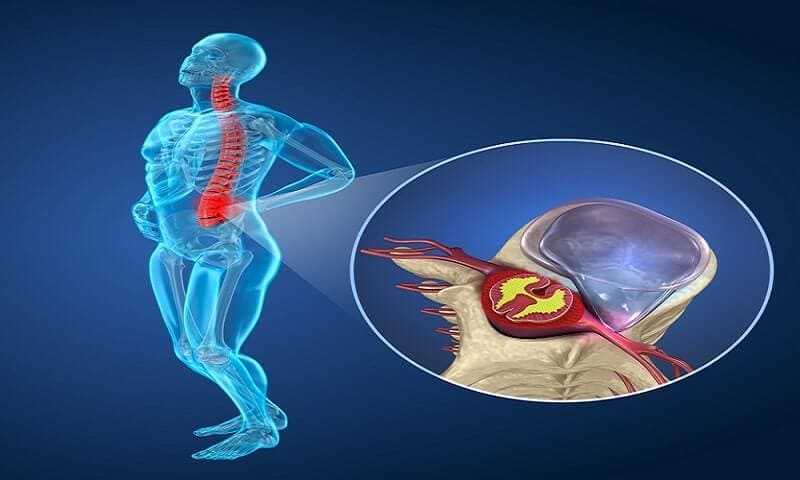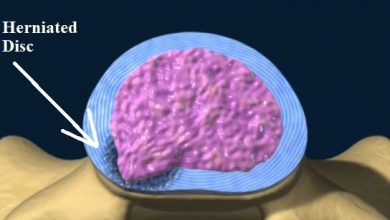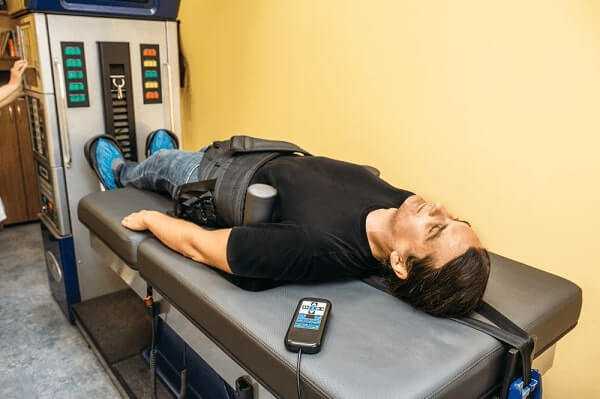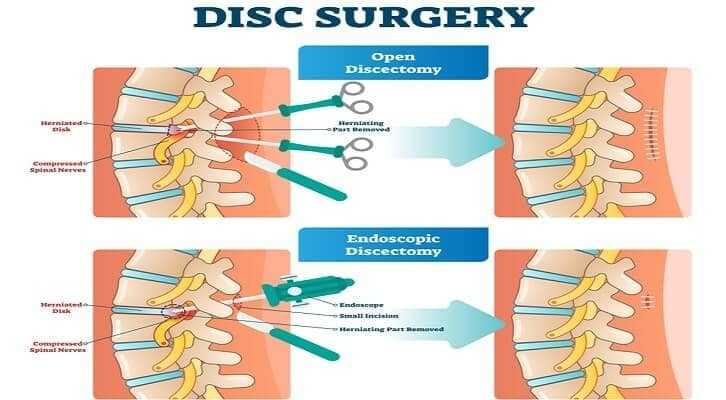What are the symptoms of a herniated disc?

Most herniated discs produce pain in one leg or one arm. Less commonly a disc will cause only back pain or pain in both legs and both arms. The pain associated with a disc herniation usually radiates from the back down the leg, the neck down the arm, or from the back of the chest to the front along the ribs, depending on the site of the herniation. The pain is described as any combination of the following sensations: burning, numbness, pins and needles, aching, and stabbing. Most people describe attacks of neck or back pain leading up to the pain that radiates into the arm or leg. The pain may be associated with loss of sensation and/or weakness of handgrip from a disc herniation in the neck and an inability to lift the foot (foot drop) from a disc herniation in the low back.
I always have my patients fill out a pain drawing so that I can immediately tell the location and characteristics of the pain. When I first see a patient’s self-generated pain drawing, I not only can tell that they have a herniated disc, but I can also tell you which nerve it is pressing on. For example, a patient with an L5-S1 disc herniation in the low back pressing on the first sacral nerve root will place symbols depicting pain down the back of the thigh, lower leg, and into the bottom and side of the foot. The symbols on the pain drawing may designate any combination of abnormal sensations such as stabbing pain, burning, numbness, tingling, and aching.
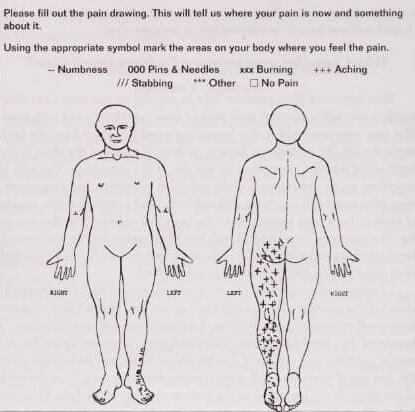
A herniated disc in the low back may cause you to lean over like the Tower of Pisa and to have a painful limp. A disc in the neck can cause you to stumble and trip and lose your balance (my aunt’s symptoms). A disc in the low back can cause inability to urinate or constipation. If you experience gait disturbance or change in bowel and bladder function associated with spine pain, notify your doctor immediately. If your pain lasts for more than a few days, interferes with your sleep, or requires that you take pain medication, you need to see your doctor to determine what is wrong.
To diagnose a disc herniation, your doctor will listen to you describe your symptoms and then perform a physical examination. Your doctor will have you walk on your toes and on your heels to check your strength and coordination; look at your spine to see if it is straight or leaning to one side and have you bend forward as far as the pain allows to determine if you have muscle spasm; check to see if you have lost any reflexes or if you have abnormal reflexes (I discovered abnormal reflexes when I examined my aunt, which told me she had something seriously wrong); determine if you have lost any sensation or muscle strength; and check to see that you have good circulation in your legs, arms, and neck.

There are a few maneuvers that will stretch the nerve over a disc herniation and reproduce the pain that you have to confirm that diagnosis. One test that is specific for detecting a disc herniation in the low back is the so- called straight-leg-raising test, the doctor slowly raises the painful leg while keeping your knee straight. The degree of elevation of the leg from the table and the degree of reproduction of the pain radiating down your leg is an indication of how much the disc is pressing on the nerve in your back. I could only lift my neighbor’s painful leg a few degrees before he screamed from the pain all femoral-stretch test the way from his back, down the leg, and to his foot. Even more ominous was that when I lifted his opposite leg, the pain was reproduced in his painful leg; this is called the crossed-straight-leg-raising test. The tests told me that the disc had squeezed completely into the spinal canal and that is exactly where I found it at surgery.
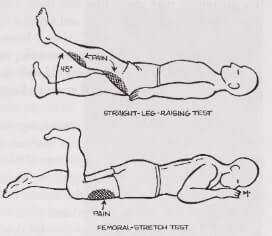
Warning: If you are having severe pain in your arm or leg, do not have someone other than a doctor try these tests on you, because it may make the pain even worse! When the doctor goes to perform the tests, tell her or him to go slowly and stop as soon as you feel the pain get worse. When I was a resident in training I unknowingly lifted a colleague’s leg too fast and too far, which exacerbated his leg pain so much that he could not sleep that night. The test did confirm my suspicion that he had a herniated disc in his low back, but he wouldn’t talk to me after that, and he insisted that someone else take care of him.
There are two other variations of the nerve-root-tension test. The first is the femoral-stretch test (see the illustration on this page), in which you lie face down and the doctor bends your knee. If you experience pain in the front of your thigh, it may mean that you have a disc herniation in the upper part of your low back (the L2-3, L3-4, or L4-5 disc). The second variation is the straight-arm-raising test where the doctor raises your arm sideways and backward. Reproduction of arm pain with this maneuver may mean that you have a disc herniation in you neck (most common levels are C5-6 and C6-7).
Mark D. Brown is Professor and Chairman Emeritus of the Deparment of Orthopaedics and Rehabilitation, University of Miami Miller School of Medicine.



